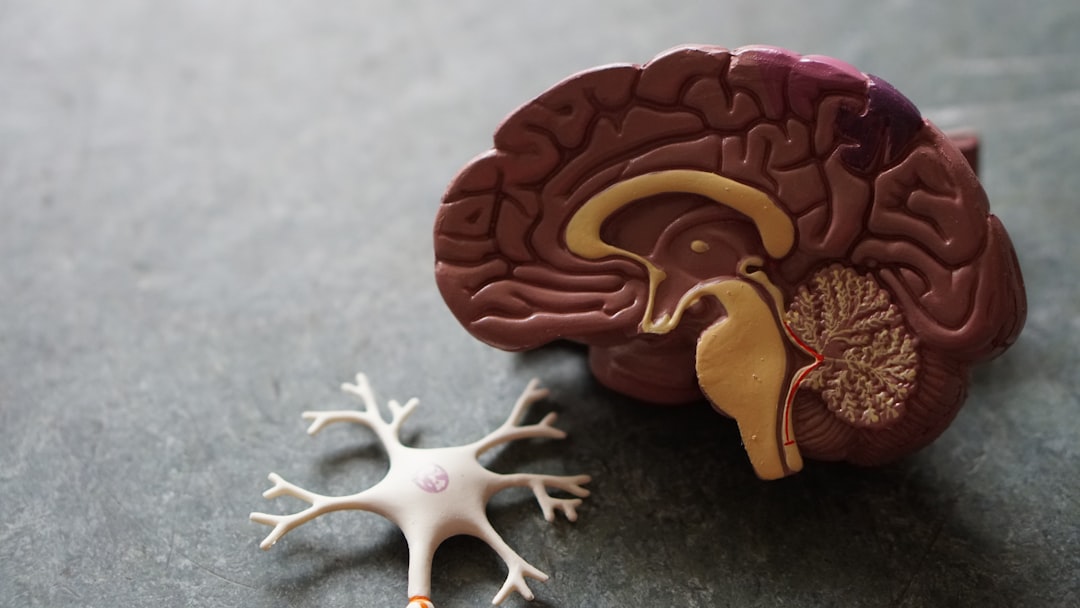What is it about?
Nucleosides, such as uridine, inosine, guanosine and adenosine, may participate in the regulation of sleep, cognition, memory and nociception, the suppression of seizures, and have also been suggested to play a role in the pathophysiology of some neurodegenerative and neuropsychiatric diseases. Under pathological conditions, levels of nucleosides change extremely in the brain, indicating their participation in the pathophysiology of disorders like Alzheimer’s disease, Parkinson’s disease and schizophrenia. These findings have resulted in an increasing attention to the roles of nucleosides in the central nervous system. The specific effects of nucleosides depend on the expression of their receptors and transporters in neuronal and glial cells, as well as their extracellular concentrations in the brain. A complex interlinked metabolic network and transporters of nucleosides may balance nucleoside levels in the brain tissue under normal conditions and enable the fine modulation of neuronal and glial processes via nucleoside receptor signaling mechanisms. Brain levels of nucleosides were found to vary when measured in a variety of different brain regions. In addition, nucleoside levels also depend on age and gender. Furthermore, distributions of nucleoside transporters and receptors as well as nucleoside metabolic enzyme activities demonstrate the area, age and gender dependence of the nucleoside system, suggesting different roles of nucleosides in functionally different brain areas. The aim of this review article is to summarize our present knowledge of the area-, age- and gender-dependent distribution of nucleoside levels, nucleoside metabolic enzyme activity, nucleoside receptors and nucleoside transporters in the brain.
Featured Image
Why is it important?
A great deal of evidence suggests that the levels of nucleosides in the brain are area-, age- and gender-dependent, reflecting the involvement of nucleosides in functional changes in different brain areas. The sophisticated functional roles of nucleosides are supported by the regionally-different distribution of nucleoside transporters and receptors and nucleoside metabolic enzymes in the CNS. The changes in nucleoside levels in some of the brain areas may be involved in neurodegenerative diseases such as Parkinson’s disease and Alzheimer’s disease or senile dementia. However, there are insufficient data about nucleoside functions in the brain, so additional investigations are needed to discover the functions of nucleosides in particular brain areas, such as the cochlear nuclei. Further functional studies on non-adenosine nucleosides in the CNS are also required. Our knowledge of the effect of gender and age differences on brain nucleoside content is very limited so studies on concentrations of nucleosides and expression levels of nucleoside transporters and nucleoside receptors in several brain areas in relation to age and gender should be continued.
Perspectives
Some of the ADK inhibitors, adenosine uptake inhibitors and nucleoside derivatives are used in treatment of CNS diseases in spite of their side effects. In addition, nucleoside transporters and nucleoside receptors are widely distributed in several organs, and the transport and metabolism of nucleoside derivative drugs are modulated by age and gender. Therefore, the available data suggest that nucleoside system is a promising drug target for developing gender- and age-specific treatments for CNS diseases.
Dr Zsolt Kovacs
Eötvös Loránd University
Read the Original
This page is a summary of: Area, Age and Gender Dependence of the Nucleoside System in the Brain: a Review of Current Literature, Current Topics in Medicinal Chemistry, April 2011, Bentham Science Publishers,
DOI: 10.2174/156802611795347636.
You can read the full text:
Resources
Contributors
The following have contributed to this page










